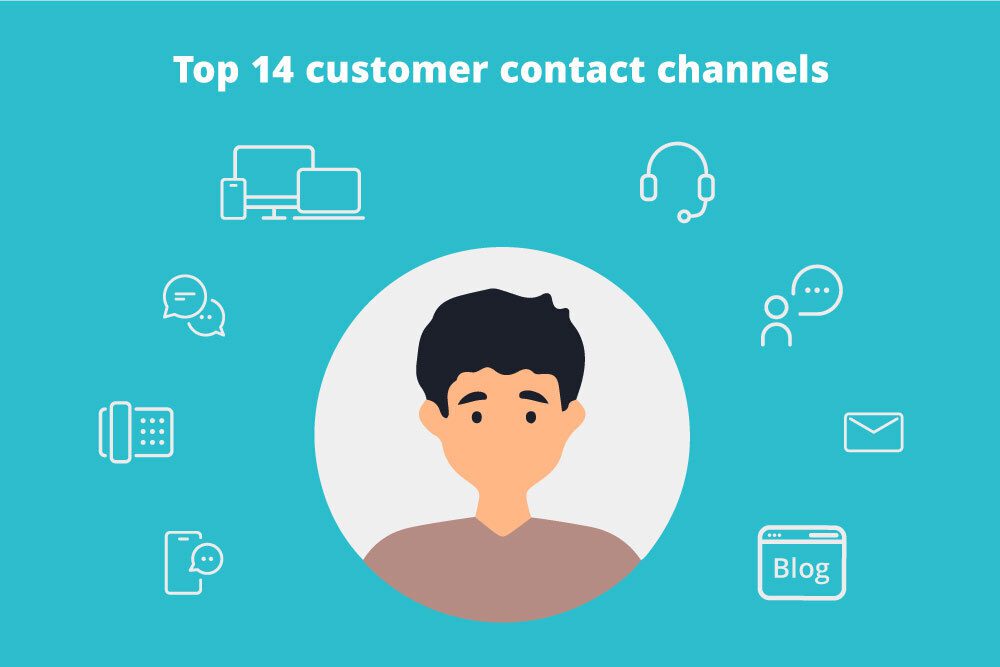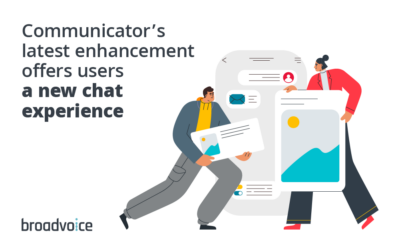With a combination of technological advances and a shifting work culture, the modern workplace is rapidly changing. As a result, effective communication is more critical now than ever. As a business owner, leader, or marketer, the best thing you can do to sustain your business is to choose the proper customer communication channels.
Communication channels are tools that businesses use to communicate and create a relationship with their customers. These channels boost relationship marketing, enhance the experience between the customer and the company, generate recognition for the company, and influence sales.
In this article, we will discuss the 14 top customer contact channels you need for your business:
- Voice call
- SMS
- Video conferencing
- Search engine optimization
- Word of mouth
- Content marketing
- Chat
- Social media marketing
- Alerts and notification tools
- Influencer marketing
- Offline advertising
- Online advertising
- Partnership marketing
We’re going to dive into each one of the above channels and explore their unique features.
1. SMS
SMS is available on smartphones and old phones alike, and it’s the most widespread communication channel aside from voice calls. Texting has clear advantages, particularly over voice. It is asynchronous because SMS dialogs are typically conducted over a more extended period and it’s more user-friendly. It’s also less intrusive since customers have to opt-in to messages and have the ability to opt-out at any time.
2. Voice call
Voice calling is a popular communication method because it is both natural and convenient. When handling customer complaints, it’s best to call as it’s often challenging to communicate your sincerity over a short text message or chat. In addition, aggrieved customers feel better when someone calls them since they are able to have their voice heard. This is also the preferred communication channel when requesting payment since an email doesn’t guarantee a quick response.
3. Email
Email marketing is a great way to build trust with your customers and keep them up to date on your brand. Emails are usually sent once a week (newsletters) or once every few days for DTC brands (automatic flows). Emails can be used to offer a product, ask for donations, deliver free educational material, send useful content, or help the company build a stronger bond with its audience. Internally, email newsletters can be used to contribute to a positive team culture.
4. Video conferencing
Video conferencing allows people to connect remotely with colleagues around the world even if they aren’t in the same location. Employees are able to communicate face-to-face, easily collaborate, and work together using video conferencing while miles, or continents, apart. A good video conferencing tool for collaborating with teammates more seamlessly is Broadvoice’s b-hive Communicator.
5. Search engine optimization
Search engine optimization consists of improving the rankings of your web pages on search engines like Google, Yahoo, Bing, etc. If your website ranks higher on organic search results, there’s a higher probability a user will click through to your page. To maximize your organic search viability, many companies pursue SEO or Search Engine Optimization. SEO is a set of different techniques used to improve the rankings of your pages organically, helping your company information to be seen by millions of people.
6. Word of mouth (referral)
Word-of-mouth (WOM) tends to drive a business’ reputation and consumers’ choices far more than other communication channels. The most frequent word-of-mouth communication channel is face-to-face communication. When customers have a good experience with a product, they naturally want to share it with other people, which gives good exposure to your company. It also improves incoming traffic, generates more sales, and enhances opportunities for new leads. In today’s hyper-connected environment, you can also tap into other tools that facilitate WOM like social media, review platforms, and blog posting.
7. Content marketing
Blog posts and video content are two high-performing types of content for small-to-medium-sized businesses. Content marketing allows you to build a strong relationship with your customers by consistently providing them with relevant, high-quality content. Many times this is done in the form of blogs written by the CEO, CTO, content manager, or other people within the company. The goal is to share important company information, problems, and solutions with your audience.
8. Chat
Chat channels allow companies to engage with customers in live conversations and are a form of instant communication that ends the need to send emails. They work best for when an employee needs an answer immediately or wants to share files or images in their group chats. They are also beneficial for employees in different locations and time zones.
9. Social media marketing
Unlike traditional marketing methods, which only offer a one-way communication channel, social media marketing gives businesses the ability to communicate with their customers in real-time. Social networks like LinkedIn, Twitter, Facebook, etc., allow recipients of a message to respond and interact with the business that shared it. This creates a more personal communication method with your audience and allows you to get your brand in front of a large number of people much quicker and easier.
10. Alerts and notification tools
Alerts and notification tools are an instant way to deliver urgent notifications to employees. Generally, these messages are delivered through smartphones, computers, and other channels. The notes will usually appear as pop-up messages or push notifications on their screen. It is a great support tool for SMS and emails. If your employees’ inboxes are flooded with emails, you could send an alert or message instead to get their attention.
11. Influencer marketing
To overcome consumer skepticism, businesses often use influential, third-party voices as vehicles to communicate to consumers. The reason this channel works so effectively is that these idols or influential people are trusted and respected in the audience’s eyes. A business can use a celebrity, athlete, model, or entrepreneur to deliver its message and it will come across as more authentic and genuine. Plus, if your customer’s favorite actor is using a certain product or brand, they are much more likely to want to try it because they value their opinion and want to emulate them.
12. Offline advertising
Offline marketing does not involve online methods or strategies. It includes television ads, billboards, telemarketing, radio, pamphlets, and other print media. This type of marketing utilizes these offline channels to achieve traditional marketing goals such as creating campaigns, generating traffic, and increasing sales.
13. Online advertising
There are many different types of online advertisements including display network ads, which are those banners you see on other people’s websites and native ads, which are shown as a standard element of the page. For example, an ad piece displayed on a news website like it was a common piece of news. Video ads, which can be seen on YouTube, Instagram, and even Facebook. And lastly, sponsored links, also known as search network ads.
14. Partnership marketing
Partnership marketing is when two brands collaborate to create mutually beneficial and cost-effective promotional campaigns to help increase brand awareness and boost sales. For the price of a single ad, both brands can create a more comprehensive promotion while saving their resources and gaining more benefits. Plus, marketing campaigns made in partnership generate more buzz, gain more momentum, and attract more people than regular self-promoting campaigns. This results in higher traffic, new customers, and more profit. Examples of partnership marketing include affiliate marketing, distribution partnership, event sponsorship, partnering with charities, and product placement.
Takeaways
When choosing a communication channel, always pay attention to which channel will convey your businesses’ message the best. For example, no one likes to be told terrible news via email or text. Do your research and see which channels your audience responds to best and then lean into those specific channels.
If you’d like some help or want to learn more about how Broadvoice’s communication channels can improve your sales, reach out today.









